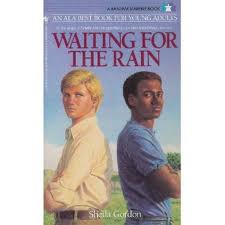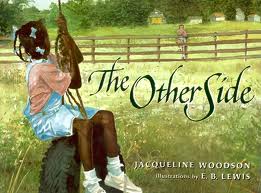This book is absolutely unforgettable. It's just a story about fourteen-year-old La Vaughn who takes on a babysitting job. She needs to work her way through school to save enough money to get through college. That's how it is in America. She means to study, to get a better job, to escape the poverty that she is growing up in.
She babysits for Jolly, a lone and inadequate, seventeen-year-old mother of two, Jeremy and Jilly. Now, the place where this little family live is absolutely disgusting. Like La Vaughn says, you really don't want to know this, but she tells you anyway. The children are filthy and deprived of all the good things in life. No decent food, no bus trips out anywhere, no learning at home, no stable basics at all. But, Jolly loves them fiercely.
Things go well enough at first. Jolly works an evening shift and La Vaughn babysits from the finish of school until late in the evening. La Vaughn works hard to look after the children and complete all her homework every night. And she takes pride in herself and her work because she's nicely brought up. She really does her best for Jeremy and Jilly. She spends time playing with them and teaching them and cleaning them and comes to love them. While Jolly is working she can afford to pay La Vaughn and La Vaughn's bank account, her own escape route, grows satisfactorily.
But Jolly gets the sack. Now Jolly and La Vaughn are friends and it is only at this point that La Vaughn really comprehends what a terrible trap Jolly is in. Jolly has no family to fall back on. She never went to school much, so she is almost totally illiterate. She cannot find another job, and if she does it most likely won't last very long. She fears to take the Welfare handouts in case she loses her children. La Vaughn continues to babysit for free while Jolly considers her non-existent options:
Me sitting the kids free is like Jolly gets Welfare right at home
from somebody almost a child herself, me.
And that's most definitely not right.
I should be paid for my services.
But then like it says Help Your Neighbor.
And like they say in Steam (Self-esteem) Class:
One good thing you do in a day for somebody else
don't cost you.
But then they go on about you have to find the good thing
that ain't the wrong good thing,
like for somebody going to abuse you,
or like you expect some big banquet of thanks for it
which you ain't going to get.
They make you give examples of both kinds.
So I end up not knowing
after I thought about it
no more than I did
in the first place.
La Vaughn persuades Jolly to go back to school. It is unbelievably moving. Read it for yourself and see.
Don't let the lay-out put you off. I must say, I groaned a bit myself when I saw it. It's just a narrative. La Vaughn tells us what happened in her own words. Each little incident is related in a separate little block or chapter. The lay-out actually makes it very quick and easy to read.
Quick and easy to read, but you won't shrug this book off quickly. There are some monumental ideas here about friendship and self-respect and pulling yourself up by your own bootlaces. Like La Vaughn and Jolly, I was thrilled by that story about making lemonade. What do you do if somebody hands you a lemon in life?
Excellent. Another one for the girls.
Review and Summary provided by: Reading Matters: Book Review - http://www.readingmatters.co.uk/book.php?id=50
Make Lemonade, written by Virginia Euwer Wolff. New York: Henry Holt, 1993. Print.
This story deals with a very tough subject: teen pregnancy. This is a great one for teachers because this is something that could possible happen in your classroom. This is great for students too because it helps them confront this issue. This is also useful because some students may have teen mom's as well.
ISBN: 9781603708210














